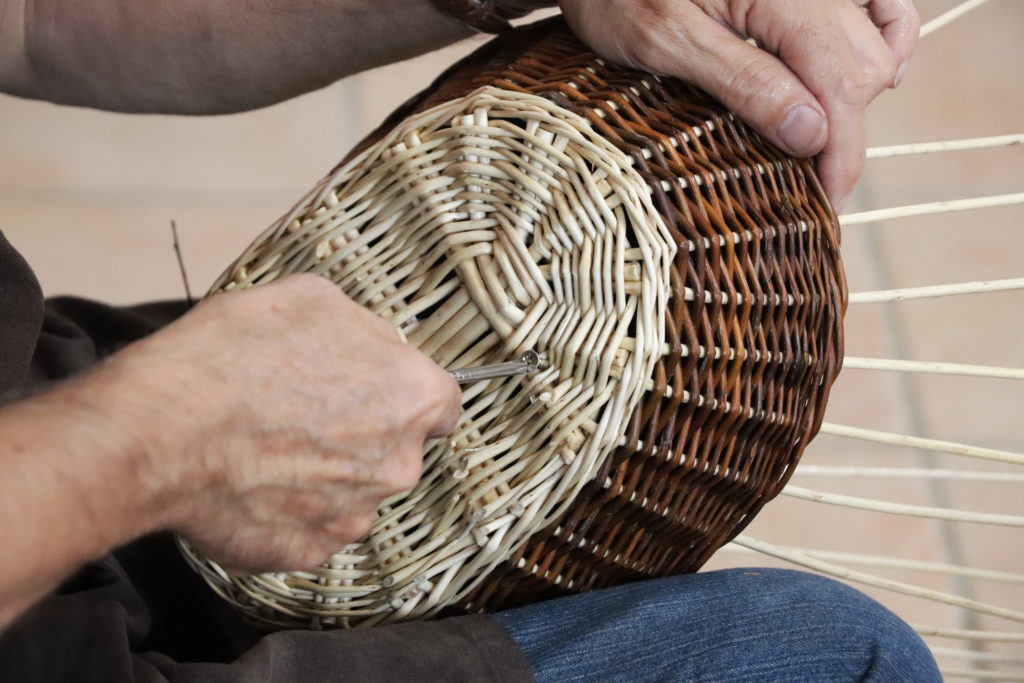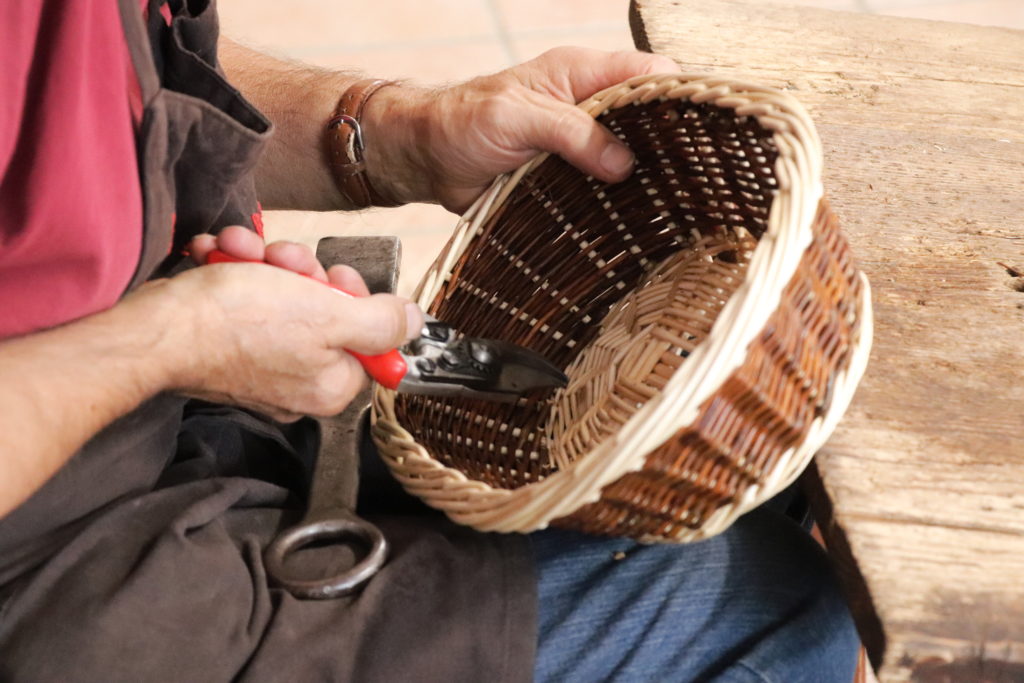Wicker basket molds are traditionally wooden shapes that serve as a template or guide to obtain and reproduce a precise shape. The particularity of some is to be dismountable in order to easily remove them from the object once the braiding is finished.
3D printing of moulds offers advantages over wooden molds.
It allows you to obtain molds:
- Lighter
- Easier to produce and reproduce
- Easier to edit
- Easier to share
- Produced directly by designers without intermediaries
- Possibly with more complex shapes
Example of the different stages of weaving on a mould, 3D printed with corn-based filament.
Constraints of basketry on mould
When weaving on a mould, the basket maker must:
- Place the uprights before placing the mould
- Flatten the uprights well on the mould
- Make several fence areas to compensate the height difference
- Let the wicker dry before removing the mould
- Provide more uprights in the exterior curves
- Ensure that the mold corresponds to the interior dimensions of the structure
Some characteristics of basketry:
- It is difficult to make reentrant shapes (flaring is simpler)
- Il est difficile de faire des angles saillants
- An object will not necessarily be less expensive if its dimensions are smaller
- Wicker is not sustainable outdoors
- An object is easier to make with a rectangular, round or oval base








